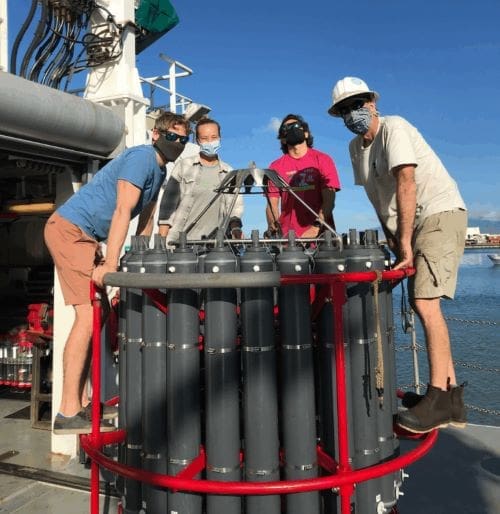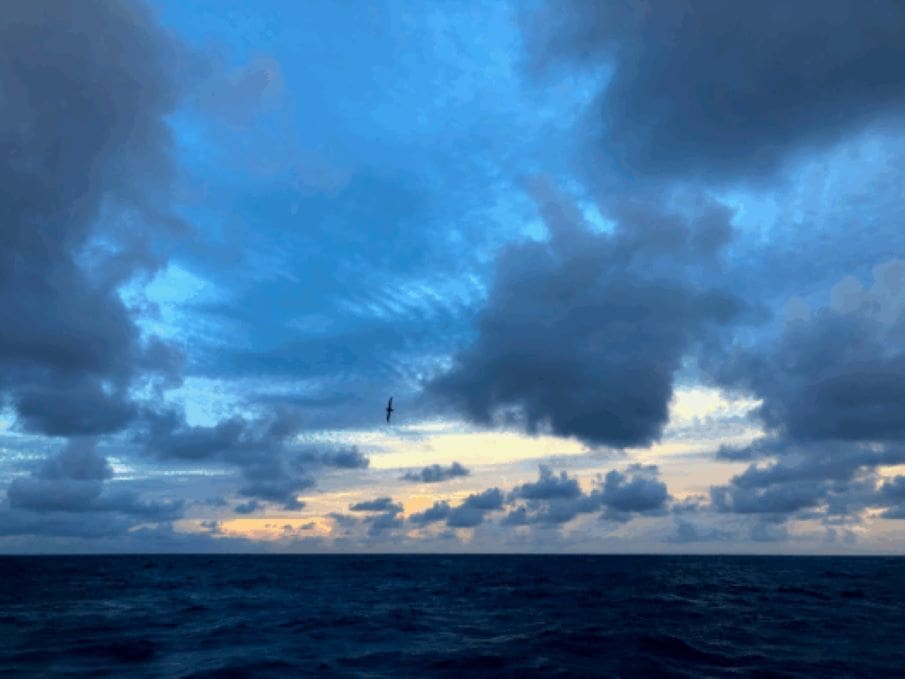Summary:
Carbon dioxide from the atmosphere has been absorbed by the Pacific Ocean for centuries, steadily increasing its acidity. A study by oceanographers at the University of Hawai‘i at Mānoa now shows that this chemical transformation is happening even more rapidly below the surface than at the top layer of the ocean. The research, published in the Journal of Geophysical Research: Oceans, examined decades of measurements collected at Station ALOHA, a long-term ocean monitoring site located about 60 miles north of O‘ahu, Hawai‘i.
The team analyzed a 35-year record of carbon data spanning the entire water column, from the surface down to nearly three miles deep. They found that all key indicators of ocean acidification are intensifying more strongly below the surface, driven by the interaction of natural carbon from decomposing organisms and human-made carbon entering the ocean. In some layers, additional factors such as cooling and freshening of seawater are accelerating the process.
“Deeper waters are already naturally quite acidic in the North Pacific, so quickly increasing acidity could negatively impact plankton species and other organisms that live below the surface,” said lead author Lucie Knor. These shifts may also reduce the ocean’s ability to absorb atmospheric carbon dioxide.

North Pacific waters are acidifying more rapidly below the surface
Carbon dioxide in the atmosphere enters the ocean at the surface and has been increasing the acidity of Pacific waters since the beginning of the industrial revolution over 200 years ago. A new study, led by University of Hawai‘i at Mānoa oceanographers, revealed that the ocean is acidifying even more rapidly below the surface in the open waters of the North Pacific near Hawai‘i.

“Ocean acidification has far‐reaching consequences for ocean biology and the global climate,” said Lucie Knor, lead author of the study and postdoctoral researcher in the UH Mānoa School of Ocean and Earth Science and Technology (SOEST). “We expected some indicators of ocean acidification to be changing more rapidly below the surface, because that was what some global studies have previously discovered, but we were very surprised that this was true for every single ocean acidification indicator.”
Knor and co-authors analyzed a 35‐year record of ocean carbon measurements made by the Hawai’i Ocean Time-series program throughout the entire water column – from the surface to nearly three miles deep – at the open ocean field site 60 miles north of O‘ahu, Hawai‘i, Station ALOHA.
They found that in all layers, there are increases of carbon from natural decomposition of sinking organisms. In some layers, accelerated acidification is associated with fresher and colder waters.
“Deeper waters are already naturally quite acidic in the North Pacific, so quickly increasing acidity could negatively impact plankton species and other organisms that live below the surface,” said Knor. “In the long run, these changes in ocean chemistry also make it harder for the ocean to keep taking up more CO₂ from the atmosphere.”
In the past decade or so, there has been an onslaught of marine heatwaves associated with unusual conditions in the ocean and atmosphere and strong, multi‐year El Niño events. Researchers, fisheries managers, and coral conservationists are concerned with the combined impacts of marine heatwaves and ocean acidity events.
Subsurface waters at station ALOHA are formed farther north in the Pacific. Changes in seawater properties impacted by evolving environmental conditions in other areas of the North Pacific are then transported by ocean currents into the deeper layers of the ocean around Hawai‘i.
“We illustrate that regional-scale changes in source water chemistry and circulation are substantial drivers of the subsurface intensification of ocean acidification around Hawaii,” said Christopher Sabine, co-author of the article and Oceanography professor in SOEST.
Currently, the research team is investigating the carbon specifically from human-made sources in the water column at Station ALOHA and how that is changing over time in different layers.
Journal Reference:
Knor, L. A. C. M., Sabine, C. L., Dore, J. E., White, A. E., & Potemra, J., ‘Drivers and variability of intensified subsurface ocean acidification trends at station ALOHA’, Journal of Geophysical Research: Oceans 130, 7: e2024JC022251 (2025). DOI: 10.1029/2024JC022251
Article Source:
Press Release/Material by University of Hawai‘i at Mānoa (UH Mānoa)
Featured image credit: Lucie Knor




